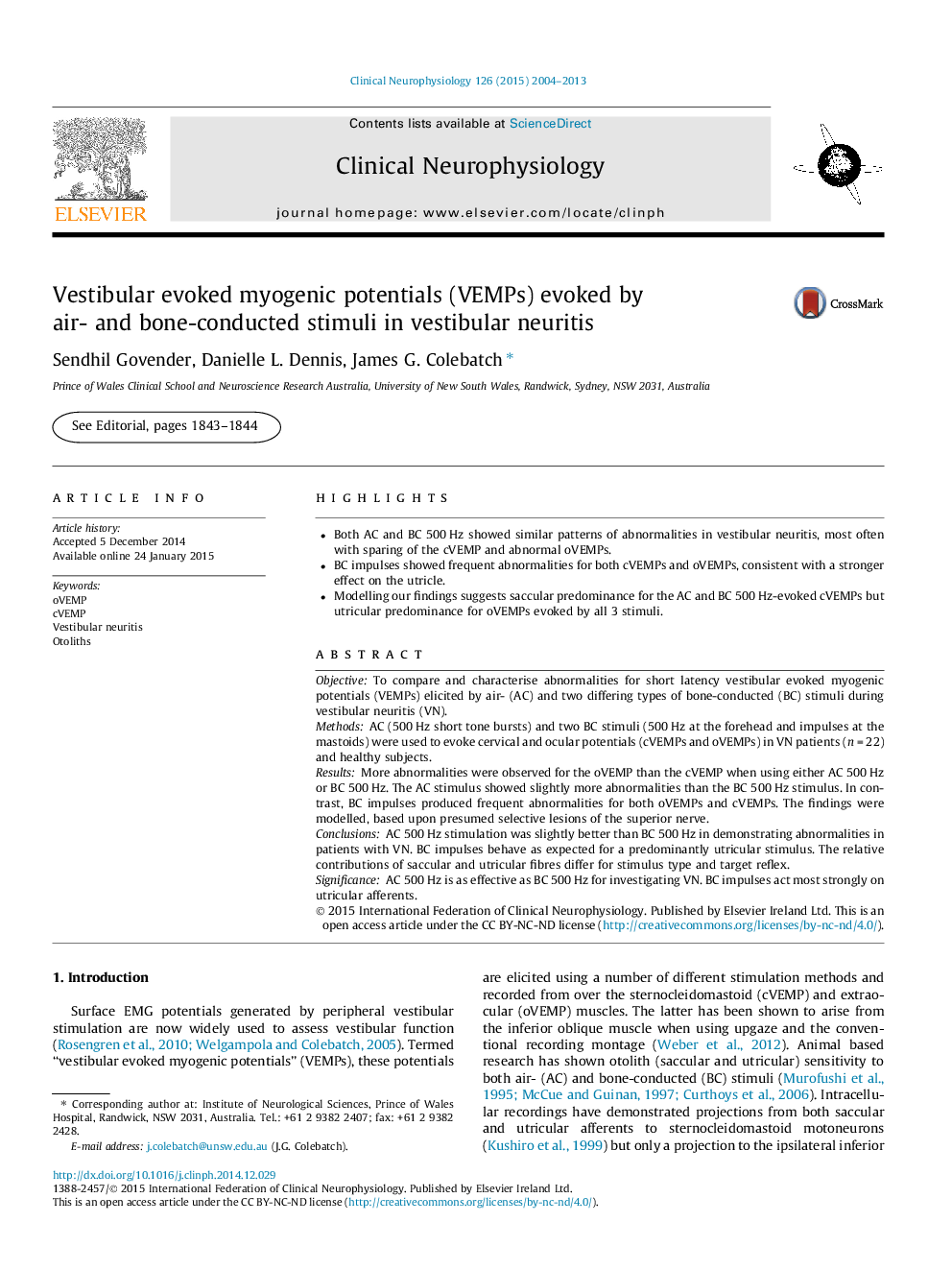| Article ID | Journal | Published Year | Pages | File Type |
|---|---|---|---|---|
| 6008606 | Clinical Neurophysiology | 2013 | 10 Pages |
â¢Both AC and BC 500 Hz showed similar patterns of abnormalities in vestibular neuritis, most often with sparing of the cVEMP and abnormal oVEMPs.â¢BC impulses showed frequent abnormalities for both cVEMPs and oVEMPs, consistent with a stronger effect on the utricle.â¢Modelling our findings suggests saccular predominance for the AC and BC 500 Hz-evoked cVEMPs but utricular predominance for oVEMPs evoked by all 3 stimuli.
ObjectiveTo compare and characterise abnormalities for short latency vestibular evoked myogenic potentials (VEMPs) elicited by air- (AC) and two differing types of bone-conducted (BC) stimuli during vestibular neuritis (VN).MethodsAC (500 Hz short tone bursts) and two BC stimuli (500 Hz at the forehead and impulses at the mastoids) were used to evoke cervical and ocular potentials (cVEMPs and oVEMPs) in VN patients (n = 22) and healthy subjects.ResultsMore abnormalities were observed for the oVEMP than the cVEMP when using either AC 500 Hz or BC 500 Hz. The AC stimulus showed slightly more abnormalities than the BC 500 Hz stimulus. In contrast, BC impulses produced frequent abnormalities for both oVEMPs and cVEMPs. The findings were modelled, based upon presumed selective lesions of the superior nerve.ConclusionsAC 500 Hz stimulation was slightly better than BC 500 Hz in demonstrating abnormalities in patients with VN. BC impulses behave as expected for a predominantly utricular stimulus. The relative contributions of saccular and utricular fibres differ for stimulus type and target reflex.SignificanceAC 500 Hz is as effective as BC 500 Hz for investigating VN. BC impulses act most strongly on utricular afferents.
